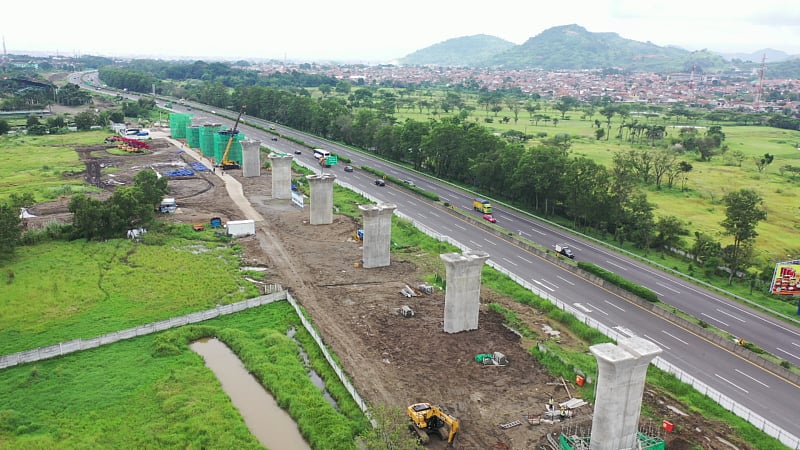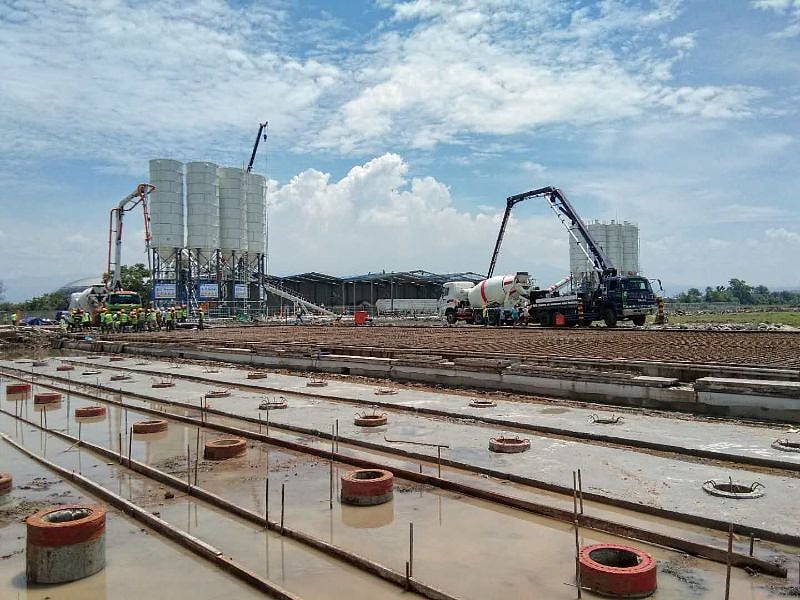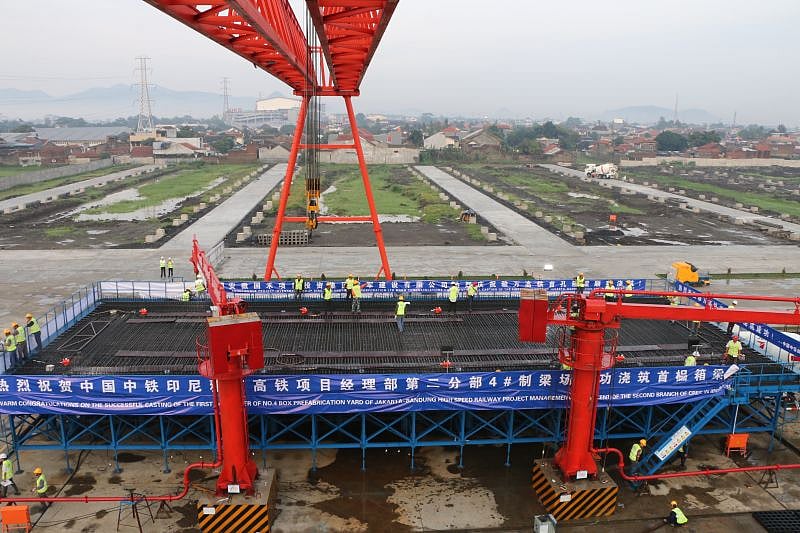Snapshot
Indonesia’s recent decision to shift its capital from Jakarta to a jungled area of East Kalimantan is set to adversely affect the economic viability of the country’s high-speed rail project that has already experienced repeated delays and massive cost overruns.
Indonesia’s first high-speed railway, a project under Belt and Road Initiative (BRI) project, is being constructed by a consortium of Chinese-Indonesian firms. On completion, 142-km rail link will connect its current capital Jakarta and the city of Bandung in West Java.
The final price tag of Jakarta-Bandung HSR is likely to come to $7.9 billion, at least $2 billion more than the $5.5 billion expected when the project was first agreed in 2015.
Indonesia’s recent decision to shift its capital from Jakarta to a jungled area of East Kalimantan is set to adversely affect the economic viability of the country’s high-speed rail project that has already experienced repeated delays and massive cost overruns.
Earlier this year, Indonesia’s parliament approved a bill to relocate the nation’s capital from Jakarta to a new location (named Nusantra ) that encompasses an area of 180,000 hectares between the regencies of Kutai Kartanegara and Penajam Paser Utara.
Indonesia’s first high-speed railway is being currently constructed by a consortium of Chinese-Indonesian firms. The joint venture was formed in October 2015 between a consortium of Indonesian state-owned companies and China Railway International.
On completion, a 142-km rail link will connect its current capital Jakarta and the city of Bandung in West Java. The high-speed rail will reduce the travel between the two central hubs to 36min from 3 to 5 hours it currently takes.
The Jakarta-Bandung HSR, a project under Belt and Road Initiative (BRI) project, is China’s first overseas high-speed rail project and the first of its kind in Southeast Asia with a maximum design speed of 350 kilometers (km) per hour.
In a recent parliamentary hearing, Dwiyana Slamet Riyadi, president director of Kereta Cepat Indonesia China (KCIC), the consortium constructing the high-speed rail link, acknowledged that the time taken to reach the break-even point for the project, which was estimated to be 26 years, will now be 40 years.
“Looking at the investment value, number of passengers and ticket prices, it’s very difficult to follow the earlier feasibility study where the assumption of a return on investment will occur within 20 years,” Riyadi said.
Riyadi said revised estimates were made based on a recent feasibility study, taking into account the COVID-19 situation, as well as “the relocation of the capital city.”
A previous study had estimated a daily passenger volume of 61,000 but another recent study has downscaled the estimates to 31,000 passengers a day, Riyadi noted.
The project’s groundbreaking ceremony was held in 2016 and the original plan was to get Southeast Asia’s first high-speed train rolling in 2019. But the progress of the project was plagued by delays due to land acquisition challenges and environmental clearances.
According to the latest status shared by the consortium, nearly 80 percent were complete as of the beginning of this year. KCIC also plans to commence a trial run on part of the line by the end of this year.
Cost Escalation
The project has also been hit by cost escalations. Indonesia originally expected construction to cost $5.5 billion and revised upwards to $6.07 billion last year. However, the final price tag is likely to come to $7.9 billion, at least $2 billion more than the $5.5 billion expected when the project was first agreed in 2015.
When the project was first awarded to the Chinese consortium in 2015, Indonesia said that project will require no state funding or financial guarantees. But in September last year, President Joko Widodo had to beat a retreat and issue a decree authorising the government to contribute public funds to the project, effectively eroding one of the biggest selling points of the Chinese proposal over a Japanese alternative.



China says Jakarta-Bandung HSR will benefit Indonesia immensely
Responding to project delays, Chinese state media said that many BRI projects like the Jakarta-Bandung High-Speed Railway (HSR), which are mega infrastructure projects, will take years to finish and likely encounter various difficulties during the construction stage.
“A delayed break-even point or a single project’s rate of return is not a core factor in defining the significance of projects.”, the Chinese state media Global Times said.
“In addition to the profit prospect of the project itself, what is more important is that it can promote the upgrading of railway technology in Indonesia, the rapid development of relevant industrial chain, manufacturing and tourism industries, boosting employment and new businesses along the railway and neighboring cities.” Global Times noted.
Another BRI-funded High-Speed Rail project that was launched around the same time as Jakarta-Bandung High-Speed Railway (HSR) was inaugurated in December 2021.
The 1,035-kilometer-long China-Laos Railway, a flagship project under the ambitious Belt and Road Initiative, was officially opened on Dec 3 by Chinese President Xi Jinping and Lao President Thongloun Sisoulivia via a video link.
The new high-speed railway connects Kunming in Yunnan (China’s most south-western province) with Vientiane, Laos’s capital. The commissioning of the rail link is set to provide a huge boost to the transport infrastructure of Laos, a landlocked Southeast Asian nation. Laos had no significant rail network till today except for a 3.5-kilometer run-down railway connecting capital Vientiane and the country’s border with Thailand.

